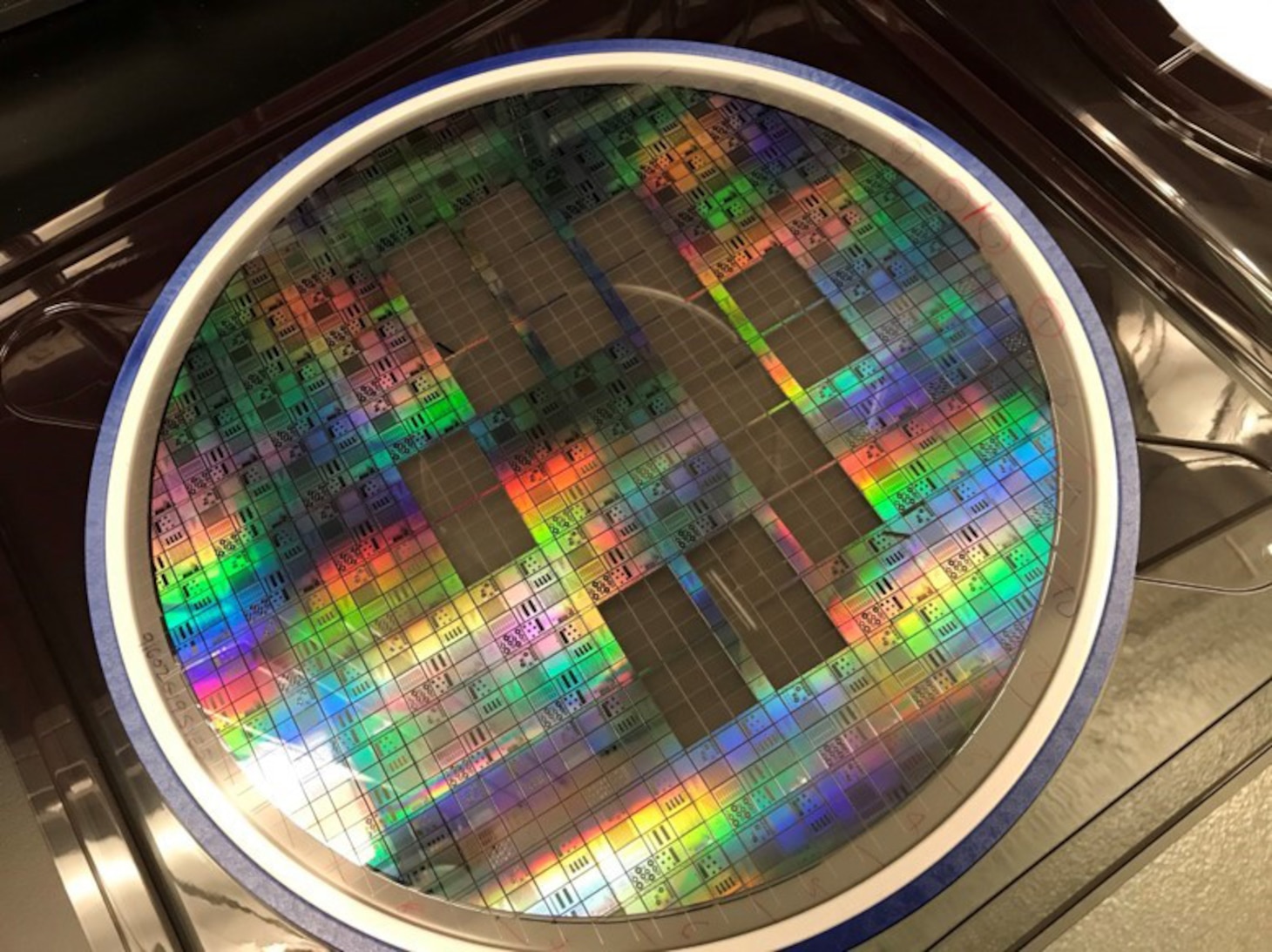By working closely with AIM Photonics’ state-of-the-art foundry, NRL’s Optical Sciences Division is developing photonic components with functionalities targeting DoD priorities such as analog signal processing, quantum information and computing, data remoting, and navigation and timing.
“Photonic integrated circuits have demonstrated that combining optical sources, modulators, and detectors on semiconductor chips is a winning technology,” said Todd Stievater, Ph.D., a research physicist from the Photonics Technology Branch and principal investigator. “They are already integral pieces of today’s internet data centers and enable the continued scale-up of the world’s flow of digital information.”
This success is founded in part on process design kits (PDKs), which include sets of pre-designed and pre-verified functional components for both traditional (electronic) integrated circuits and photonic integrated circuits (PICs).
“The RF SUNY license to NRL’s component library will permit AIM Photonics to create a new PDK for internal research & development by AIM Photonics customers,” said Nathan Tyndall, a research chemist from the NRL Photonics Technology Branch and co-inventor of the component library.
The Photonic Integrated Circuit Sensors program, which resulted in the creation of this intellectual property, is sponsored by the Under Secretary of Defense for Research and Engineering, as part of the Trusted and Assured Microelectronics: Radio Frequency Opto Electronics portfolio.
The component library is based on years of internal research at NRL focused on developing and processing silicon-nitride waveguides to support PIC applications. This license is an important step toward lowering the costs associated with using PIC technology for DoD applications. Silicon-nitride is a glass-like material commonly used in semiconductor fabrication. In NRL’s work, optical waveguides are formed in this material, which allow light to be transported across a semiconductor chip.
“’This design once; use many, many times approach’ provides economies of scale for commercial applications,” Stievater said. “The high, up-front labor and resource costs of PIC technology have hindered comparable development for lower-volume applications of vital interest to the Department of Defense.”
With the exception of software, the DoN has not historically used trade secret law to protect its inventions; instead opting to protect its inventions under patent law. “While patenting offers the broadest scope of protection, it is also expensive, prolonged, and requires the invention to be publicly disclosed,” said Stephen Deese, Ph.D., a NRL Office of Technology Transfer partnership manager. “This is the first time a trade secret has been commercially licensed by the DoN and provides an additional tool to protect and license intellectual property.”
Trade secret law, on the other hand, has a narrow scope of protection but is less costly, quick to implement, and by definition requires that the invention be kept secret. “Private sector companies routinely choose between trade secret protection and patent protection based on what makes sense for them,” said Sean Walsh, a NRL Intellectual Property attorney.
NRL’s Intellectual Property Counsel explored whether the DoN could do the same thing under its existing statutory authorities. “After months of legal analysis, NRL’s Intellectual Property Counsel concluded that the Department of Navy could protect and license its inventions as trade secrets, and provided their analysis to Counsel, Office of Naval Research, who formally adopted it in March 2021,” Walsh said.
NRL’s Office of Technology Transfer and Intellectual Property Counsel then built a trade secret program. “The culmination of that effort is this license to RF SUNY,” said Amanda Horansky-McKinney, former head of the NRL Office of Technology Transfer. “NRL hopes, and expects this is the first of many trade secret licenses.”
In the past few months, several other government agencies have reached out to NRL to learn about its trade secret program and to see if they could implement something similar. “NRL’s trade secret program is a model for other agencies and a blueprint for government intellectual property in the future,” Walsh said.
“The fab team at AIM Photonics has been working with our members, like NRL, to develop new technology platforms for specific applications such as photonic sensors,” said AIM Photonics Chief Operating Officer David Harame, Ph.D. “New process technologies require new PDKs for designers to be able to take advantage of the technology. By partnering with experts like Dr. Stievater we are able to move quickly to create and release a PDK with their verified photonic devices.”
NRL’s component technologies, developed under this effort, are now available to license for companies with interests in collaborative research purposes, commercial applications, and educational partnerships. For additional information, contact the NRL Office of Technology Transfer at techtran@nrl.navy.mil.
The NRL Optical Sciences Division carries out a variety of research, development, and application-oriented activities in the generation, propagation, detection, and use of radiation in the wavelength region between near-ultraviolet and far-infrared wavelengths. The research, both theoretical and experimental, is concerned with discovering and understanding the basic physical principles and mechanisms involved in optical devices, materials, and phenomena.
About the U.S. Naval Research Laboratory
NRL is a scientific and engineering command dedicated to research that drives innovative advances for the U.S. Navy and Marine Corps from the seafloor to space and in the information domain. NRL is located in Washington, D.C. with major field sites in Stennis Space Center, Mississippi; Key West, Florida; Monterey, California, and employs approximately 3,000 civilian scientists, engineers and support personnel.
For more information, contact NRL Corporate Communications at (202) 480-3746 or nrlpao@nrl.navy.mil.







 WASHINGTON –
WASHINGTON – 